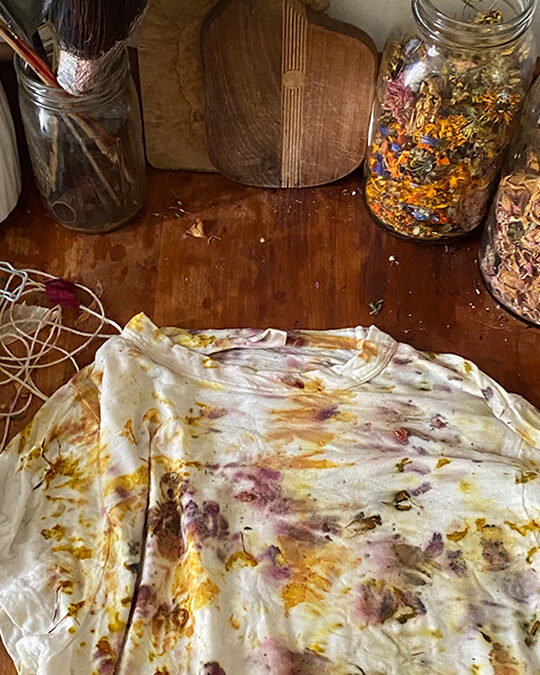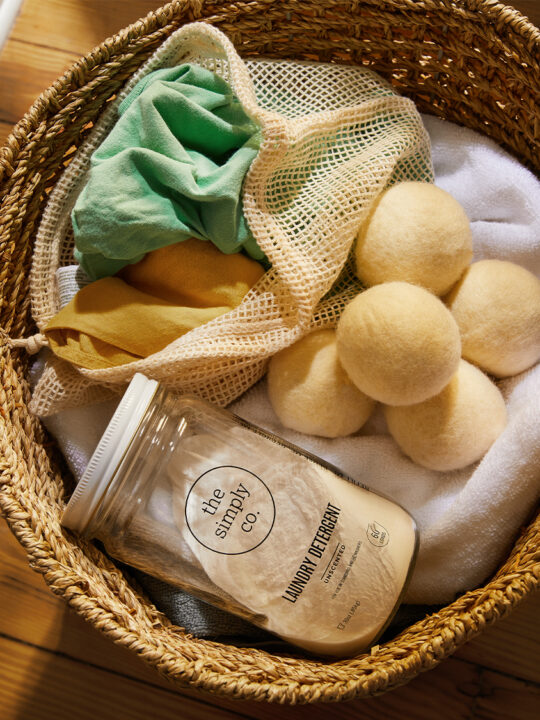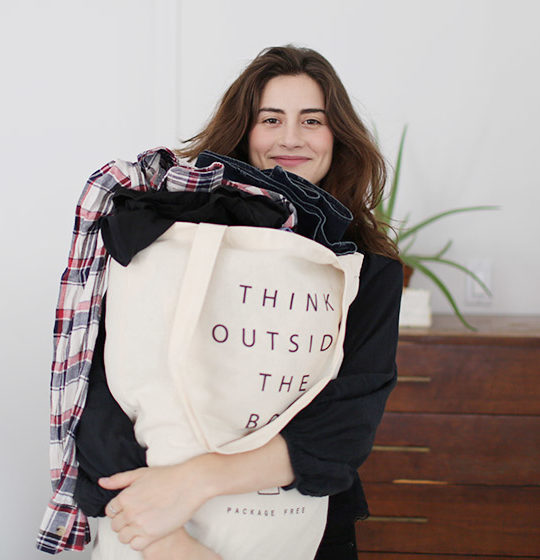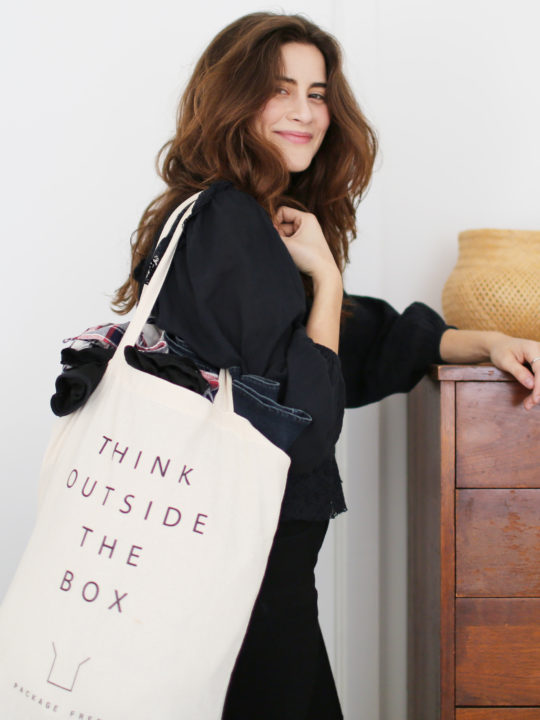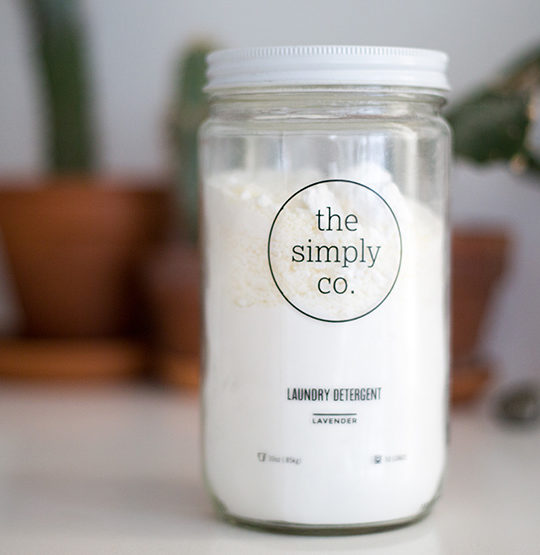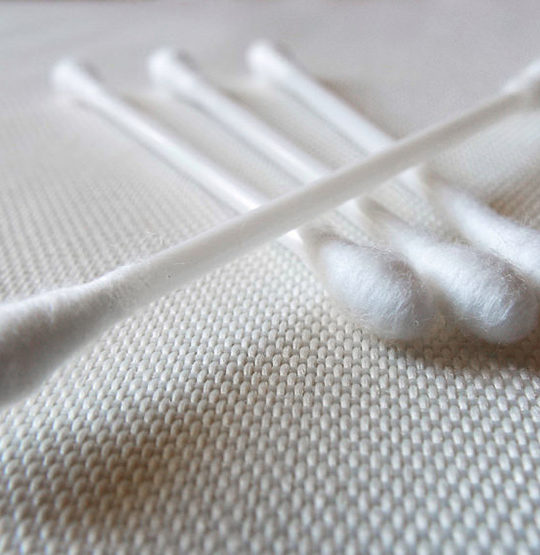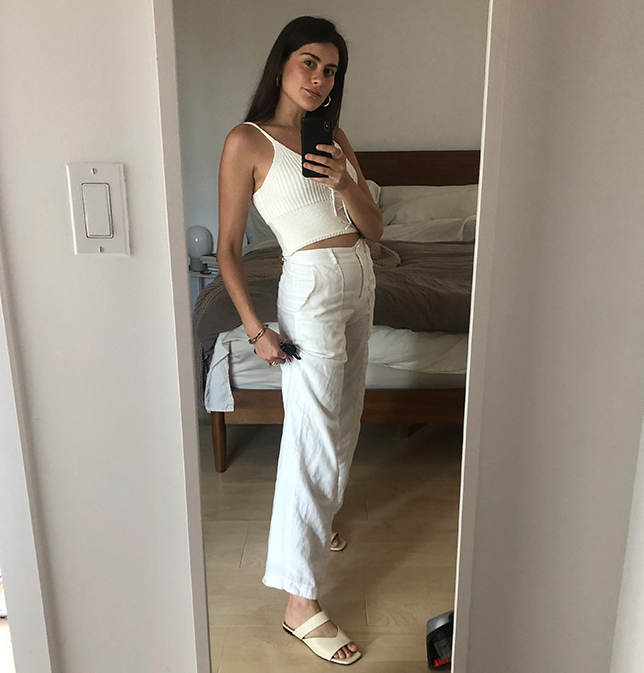
The global fashion industry is a 2.5 trillion dollar business, which contributes to roughly 10% of all greenhouse gas emissions. That’s more emissions than all international flights and shipping combined. And the negative impacts don’t stop with emissions.
The water used by the fashion industry would be enough water to meet the needs of 5 million people annually. And in many countries where garments are produced, untreated toxic wastewater (often containing lead, mercury, and arsenic) from textile factories are dumped directly into nearby rivers; and fertilizers from non Organic cotton production often runoff into nearby water sources, polluting waterways and contributing to ocean acidification.
The fashion industry also plays a major part in soil degradation from the massive use of chemicals to grow crops for materials like cotton, and deforestation from harvesting wood fibers like rayon, viscose, and modal.
The biggest culprit? Fast fashion.
What is Fast Fashion?
The term “fast fashion” is a popular buzzword, so you’ve probably heard it before—but what does it really mean?
Large retail brands (think: Zara, Forever21, TopShop, Fashion Nova, and countless others) duplicate trends from Fashion Week catwalks in their stores in only a matter of weeks, and for a fraction of the cost. In fact, it’s not uncommon for fast fashion retailers to introduce new products multiple times in a single week to stay on-trend. But to do that, it often means ramping up production, using inexpensive materials, exploiting child labor, and having dangerous working conditions. The result: cheaply made, inexpensive clothing that quickly falls apart or is seen as disposable once it loses its’ “trendiness”.
Garments are now kept for a much shorter time frame and hardly worn. A UK study showed that women only wore their garments a max of 7 times. And that’s if items are even lucky enough to be bought and taken home. Approximately 20% of all clothing made by fast fashion brands are never actually purchased, so they are immediately sent to landfill or burned.
How much “fast fashion” are we throwing away?
Globally, it’s estimated that 92 million tons of textile waste are created annually from the fashion industry. 92 MILLION TONS! This is about equal to one garbage truck of textiles going directly to landfill or burned every single second.
In the United States, the average American tosses 82 pounds of textiles each year, and textile waste makes up 6% of the total American waste stream—which is roughly 25 billion pounds of clothing.
Ok, these numbers are REALLY bad. So what do we do about it?
It’s pretty clear that the fashion industry needs a redesign. Which raises the obvious question: Can style and sustainability co exist?
After living a Zero Waste lifestyle for over eight years and still having an evolving closet, I’m happy to report that the answer is yes. Here are a few ways to continue living your values, without sacrificing style and creativity:
1. Use and Protect What You Already Own
A big factor of low waste living is using what you already own. In doing so, it prevents having to buy new and ultimately means that less will be sent to landfill. So it may come as no surprise, but the most sustainable wardrobe is the one that you already have.
When it comes to working with your current closet, here are a few things to consider:
Get creative with what you have. The average American woman has 103 items in her closet. If you’re tired of the items you have, ask yourself: Can I mix and match any of these pieces in new ways? Or can I upcycle any of them in fresh ways? That might mean a tie dye job on an old pair of socks, sewing together multiple pairs of jeans to create a patchwork look, turning a silk bandana into a top, adding embroidery details to an old tee, or cutting jeans off into shorts. You might be surprised at what you can do with the pieces you already own. If you need a little inspiration, check out my friend Natasha’s amazing upcycled work at The Consistency Project!
Responsibly donate, sell, recycle, or swap with friends that you no longer use. A study found that on average, women only like about 10% of their wardrobe. In order to make the most of your closet, keep only what you actually need and love—and then responsibly donate, sell, or recycle whatever you don’t want, don’t wear, or truly don’t need.
It can be hard to let go of clothing items because they might hold sentimental value, but if all they’re doing is collecting dust in the back of your closet, it’s a waste for you to keep them. Whenever I pass on my clothing to someone else, it gives me peace of mind knowing that they’ll find more value and enjoyment from it.
Psst. If you need help accessing and editing your wardrobe, check out my guide to a Zero Waste Wardrobe! And if you’re looking to responsibly recycle or get rid of your old textiles, here is how you can do that.
Protect what you own. Treating your clothes with care is a key element of prolonging your current wardrobe. Some things to consider…
-
- Air drying. Microscopic damage occurs every time clothing is put into a dryer. The damage can be hard to see to the eye, but all you have to do is check the lint trap to see it (lint is tiny broken off bits of fabric, and over time, these tears cause clothing to fall apart). A study found that after only 20 drying cycles, fabric can lose 50% of its strength (aka it becomes twice as easy to tear). Instead, air dry your clothing with a drying rack or line drying. Drying racks are super easy to find secondhand. I found my 100% bamboo rack on Craigslist. Otherwise, the back of a chair will do the trick!
- Washing delicate items by hand. I like to handwash most of my clothing because it’s more gentle on the fabric. To do so, I use a bit of The Simply Co. and wash everything in my sink. See how I do that here!
11403527764 - Using a GuppyFriend bag. Not only do washing bags help to catch microplastics that break off when washing synthetic clothing, but they also prevent fibers from breaking off your clothes which extends the life of your clothing. In fact, a study found that 86% fewer fibers shed from synthetic textiles when you wash with a GuppyFriend.
2013607198817
With all that said, our bodies and personal style often change throughout the years, which sometimes means having to buy *new*. In that case, here are some options…
2. Shop Secondhand
I’ve been secondhand shopping for most of my clothes for nearly a decade now, so it’s safe to say that I’m a secondhand shopping enthusiast. By purchasing secondhand, you use items that are already in the waste stream and prevent contributing to the demand for fast fashion. It can take some time, energy, and preparation (here are my secondhand shopping tips!), but you can find unique and fashionable pieces at thrift stores—I promise!
And if you don’t have any second hand shops near you or if you would prefer to thrift online, Poshmark, Ebay, The Real Real, ThreadUP, and Depop are awesome options.
Psst. If you’re shopping online, ask your seller if they are able to ship in a paper envelope without plastic (USPS has 100% post consumer envelopes!) and if you’re shopping at a store, don’t forget your reusable tote! Plus, if you are a seller, you can access paper tape here!
3. Look for Natural Fibers
One of the first goals that I set for myself when I started my sustainability journey was to say NO to any type of new synthetic clothing. Why?
Synthetic materials like polyester, nylon, vinyl, “vegan leather”, and many other items are typically made from fossil fuels. Aka not only are they toxic to make, but they can break down into microplastics (which do not decompose!) that infiltrate our waterways and aquatic ecosystems (learn more about microplastic pollution and the environment here). Psst. For any synthetic clothing that you already own, try washing them less often, and if possible, use a washing bag like GuppyFriend to prevent microplastic shedding into the marine environment.
Most synthetic materials are also treated with flame retardants to prevent emitting hazardous chemicals when exposed to heat. Aka not only are they toxic to the environment, but they can also be toxic and carcinogenic to humans as well.
For these reasons, I avoid synthetic materials. Instead, I look for clothing pieces made from natural fibers (look at the little tag on the inside to see the fabric makeup), like Organic cotton, hemp, linen, bamboo, and wool. Natural materials like these are regenerative, they’re often more breathable and soft compared to synthetics, typically use less water to produce, are made without chemicals, and they can be composted at the end of life.
4. Support Slow Fashion Brands and Invest in Quality, Timeless Pieces
Eight years ago, “sustainable brands” were nearly impossible to come by, and what was available looked like brown linen bags (no offense to brown linen bags, just not my style). Today, the industry looks a lot different. It’s exciting to see that more and more brands are working towards better sustainability practices, more transparency, using quality materials, ensuring proper environmental precautions are being met, ensuring that working conditions are responsible and ethical and that all employees are being paid a fair and living wage, and so on. Some of my favorites are Christy Dawn, Eileen Fisher, Theory, Outerknown, For Days, Levi’s, Shop Arielle, Nomaesi, and Reformation.
[Disclaimer: The word “sustainability” has become so popularized in the industry, that it’s important to do your own research on brands and whether or not their values align with yours before purchasing to ensure their claims are true.]
Spending more on a single item can also cause you to question whether you reeeeally want something, how much you’ll actually wear it, and whether it’s worth the cost. That item then becomes an investment piece that you’ll cherish for a lifetime and treat with care—which may not be the case with an $8 top that you scooped off of a sales rack. BUT, quality pieces do not always have to come with a higher price tag. I’ve found lots of amazing pieces at thrift stores, and on The Real Real and eBay for a fraction of the price.
What are some of the ways that you have continued to dress in alignment with your personal style, without sacrificing sustainability? Let me know in the comments section!
